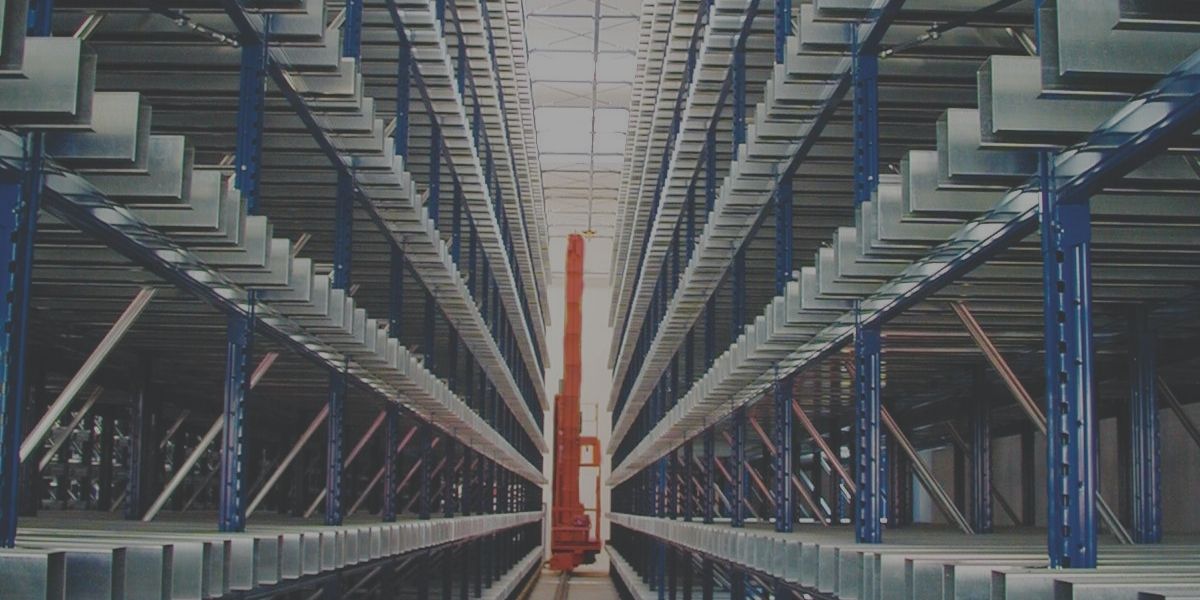
Automatic, stacking and access systems are robotic systems that stack a load (pallet, basket or parcel) at predefined addresses and can bring the right product when requested, without error and in the shortest time.
The concept of warehouse, which is an indispensable part of logistics, has been used and understood since the past as a place where goods are placed and stored for a long time. However, today, the main purpose of logistics is to deliver raw materials to production and produced products to consumption in the fastest and most economical way, without interrupting the movement of goods.
For this reason, instead of the term warehouse today;
Consolidation center for places where products coming from different exit points are stocked for a short time,
Definitions such as Distribution Center have been introduced for places where products are rehandled according to their shipping locations and classified according to the addresses to which they will be transported.
The volumes where both services are provided are called 'logistics centres'.
The need for high shelves has led to the use of reach trucks instead of forklifts and turret trucks instead of reach trucks. However, with these applications, a maximum height of 15-16 meters can be reached. And from time to time it may be insufficient at these heights. Another issue in warehouses with high ceilings that will increase efficiency in logistics is reducing the forklift passage distance between shelves. In this way, more products can be placed per unit volume.
Another system that has become widespread in the last thirty years in order to achieve maximum efficiency is automatic storage systems that operate in narrower shelving spaces and do not contain human beings. These robot handling systems, which work in volumes built at a height of 25-40 meters, work very efficiently in serial warehouses where space is valuable and do not want to lose space for stocking, where it is necessary to work at high speed and where there is a large product variety. These systems operate automatically, without human intervention, under the control of MFC, which controls the warehouse, and WMS software, which directs the entire system at the top.
In these systems, which we call fully automatic storage systems, the loads unloaded from the door are left at the door of the warehouse with conveyors and elevators, and the robot handler receives the message from where the pallet is left, reads the barcode on it and carries it to the appropriate address. It is a system whose movement is faster than a normal human can use, does not require manpower, does not make mistakes, has high reliability and has a low probability of failure.
Since the shelf spaces in fully automatic warehouses are very narrow, such units are generally built as clad warehouses. Construction continues by mounting the shelves on a solid ground and placing the roof on these shelves. Finally, the side and front walls are mounted on this shelf construction. Ramps and doors are placed. Thus, a closed volume is created. It is a system that speeds up construction and ensures maximum use of volume. The return on investment is shorter than conventional systems.
Fully automatic warehouses can be used in systems that enter and exit pallets, as well as parcels, etc. It is suitable for storage and can even be adapted to systems that allow Pallet entry and Box exit when necessary.
One of the main purposes in logistics centers is to maximize the volume used. Increasing land costs force the construction of warehouses that use height. And by stocking maximum products in these high volumes, it is aimed to reduce storage costs to the minimum possible values per unit product.
In addition to increasing the volume, using the equipment used inside for a longer period of time and with higher efficiency is also a factor that reduces costs. Similarly, reducing the number of manpower working inside means increasing the amount of material handled per unit time, which has an impact on unit cost.
All of these can only be achieved by increasing the shelf height.